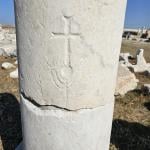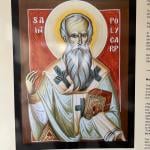In an old Theology Today article, Walter Lowrie claims that “Without the kiss of peace the Holy Communion is not evidently a Koinonia.”
He recognizes that it’s an extreme claim, but gives a historical defense of the assertion: “Pope Innocent III (d. 1216) asserted in De sacro altaris mysterio that ‘the kiss of peace was shared by all the faithful in the Churches.’ He speaks only of the West, for the custom seems to have been abandoned earlier in the East. And in the West this was the beginning of the end. For before the middle of that century Walter Archbishop of York introduced the practice of passing to the laity a sacred object for them to kiss, the so-called osculatorium or pax. This substitute for the kiss of peace was hardly used later than the Renaissance. After that there was no general demonstration of brotherly love, though the Roman clergy still exchange kisses at a solemn mass, and at other times content themselves with kissing the altar and the book of the Gospel, while the people are allowed to kiss the hand of the priest.” As Lowrie states, “This ceremonious kissing of sacred objects does not prompt anyone to exclaim as pagans did of the early Christians, ‘See how these Christians love one another!’”
This reduction of the holy kiss, Lowrie says, “was not the beginning of the end, but rather the end of a long process. For the kiss of peace (‘the pledge of piety and love,’ as St. Ambrose called it) was the last expression left of Christian fellowship at the Lord’s Supper, since the people had ceased long before to communicate at the mass, and commonly partook of the reserved sacrament outside the mass.” After the kiss was removed, there was no sign that Communion was in fact a koinonia .











